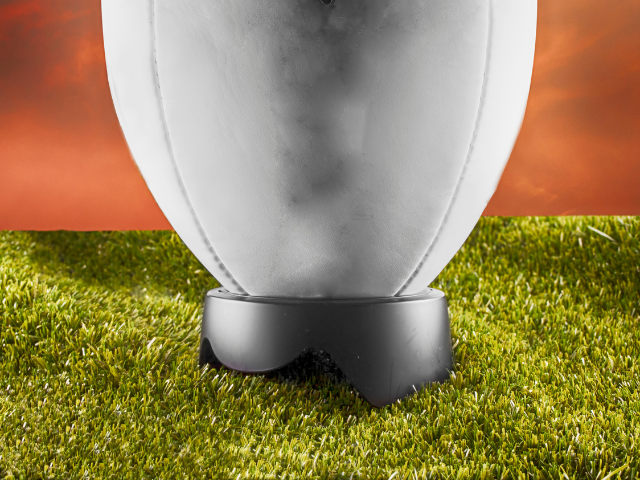Taking care of your kicking tee is just as important as choosing the right one. In this post, we’ll guide you through Rugby Kicking Tee Maintenance and Storage to help extend the life of your tee and keep it performing at its best.
A well-maintained tee gives you the stability you need for accurate kicks, but if it’s worn out or damaged, it can throw off your game.
For example, cleaning your tee regularly to remove dirt and mud after practice can prevent it from wearing down too quickly.
Proper storage is also key—keeping it in a dry, cool place will help prevent cracks or warping.
In this guide, we’ll share simple tips on how to clean, inspect, and store your rugby kicking tee so that it’s always ready for your next practice or match. Let’s make sure your tee stays in top shape!
Why Kicking Tee Maintenance Is Important
Maintaining your rugby kicking tee is essential for several reasons. Over time, wear and tear can affect the tee’s stability and grip, leading to less accurate kicks. Dirt and grime buildup can also make it harder for the ball to stay in place, affecting your performance. Properly caring for your tee ensures it remains durable and reliable for every practice and game.
Let’s look at how you can keep your kicking tee in excellent condition with regular maintenance.
1. Cleaning Your Rugby Kicking Tee
Your kicking tee is bound to get dirty, especially if you’re playing on outdoor fields. Dirt, mud, grass, and moisture can accumulate on the tee, making it look bad and affecting how well the ball stays in place. Cleaning your kicking tee regularly will keep it in good shape and ensure it performs well during games.
How to Clean Your Rugby Kicking Tee:
Rinse with water: After each use, especially if the field is muddy or wet, rinse your kicking tee to remove any dirt or debris. You can do this under a tap or with a hose.
Use mild soap: For tougher stains or dirt buildup, use a mild soap and a soft brush or sponge. Gently scrub the tee, paying extra attention to any grooves or prongs where dirt might get stuck.
Dry thoroughly: Dry the tee thoroughly with a clean cloth after cleaning. Leaving it wet can cause it to degrade faster, especially if it is made from rubber or plastic.
2. Inspecting for Wear and Tear
Over time, your rugby-kicking tee can wear down, mainly if you use it frequently. Small cracks, chips, or worn-out areas can affect the tee’s performance, making it less stable or unable to hold the ball securely. Regularly inspecting your kicking tee for signs of wear and tear will help you catch any issues before they affect your game.

What to Look For:
Cracks or chips: Check the base of the tee and any prongs for cracks or chips. These can weaken the tee and cause it to break during use.
Worn-out areas: Look for spots where the material has thinned or worn down. This is common in areas where the ball rests or where the tee touches the ground.
Loss of stability: If the tee doesn’t stand as firmly as it used to, it might be a sign that it’s wearing down and needs to be replaced.
By catching small problems early, you can decide whether your tee needs to be replaced or can still be used for practice sessions.
3. Protecting Your Kicking Tee from Harsh Weather
Weather conditions can significantly impact the lifespan of your kicking tee, especially if you leave it outdoors between games or practices. Exposure to extreme heat, cold, or moisture can weaken the material and cause it to crack or break more easily.
How to Protect Your Tee:
Keep it out of direct sunlight: Prolonged exposure to direct sunlight can cause rubber and plastic materials to break down. Keep your tee out of the sun when it’s not in use.
Avoid freezing temperatures: Cold weather can make rubber brittle, increasing the chance of it cracking. If you play in cold conditions, bring your tee indoors after use to prevent it from freezing.
Store in a dry place: Ensure your tee is dry before storing it. Moisture can weaken the material over time, especially rubber or plastic.
4. Proper Storage for Your Kicking Tee
Proper storage is as important as cleaning and inspecting your rugby kicking tee. Proper storage can help prevent damage, keep it clean, and ensure it’s ready for use whenever you need it.
Best Practices for Storing Your Rugby Kicking Tee:

Keep it in a cool, dry place: Store your kicking tee in a cool, dry area, away from direct sunlight or extreme temperatures. A storage box, sports bag, or equipment shelf keeps the tee safe.
Use a carrying bag: Consider using a dedicated carrying bag if you’re traveling with your kicking tee. This will protect the tee from being crushed or damaged by other gear in your bag.
- Don’t stack heavy items on top: When storing your tee, avoid placing heavy objects on top of it. This could warp the shape or damage the tee, especially if it is made from flexible materials like rubber.
5. Knowing When to Replace Your Kicking Tee
Even with the best care and maintenance, your rugby-kicking tee won’t last forever. Knowing when to replace it is essential to ensuring your kicks remain accurate and robust. If you notice significant damage, loss of stability, or reduced performance, it’s time to invest in a new kicking tee.
Signs It’s Time to Replace Your Tee:
Cracks or chips: If the tee has large cracks or is missing chunks of material, it’s time for a replacement.
Worn-out prongs: If the prongs or grooves that hold the ball have worn down or are no longer gripping the ball securely, you’ll need a new tee.
Reduced stability: If the tee isn’t standing as firmly as it used to or if it moves during kicks, it’s probably worn out.
Replacing your tee at the right time ensures you always use equipment supporting your game.
Enhance your kicking game with the Carta Sport DAN CARTER Supertee King—designed with tapered teeth for zero friction, maximum sweet spot exposure, and versatile ball positioning, as used by rugby icon Dan Carter!
Conclusion
Regular maintenance and proper storage are essential for keeping your rugby kicking tee in good condition.
By cleaning your tee after each use, inspecting it for wear and tear, protecting it from harsh weather, and storing it correctly, you can extend its lifespan and ensure it performs well every time you kick.
Remember to replace your tee when it shows signs of significant wear to keep your kicks accurate and reliable.
Don’t forget to check out our recently published articles for more rugby training tips, gear reviews, and helpful advice!